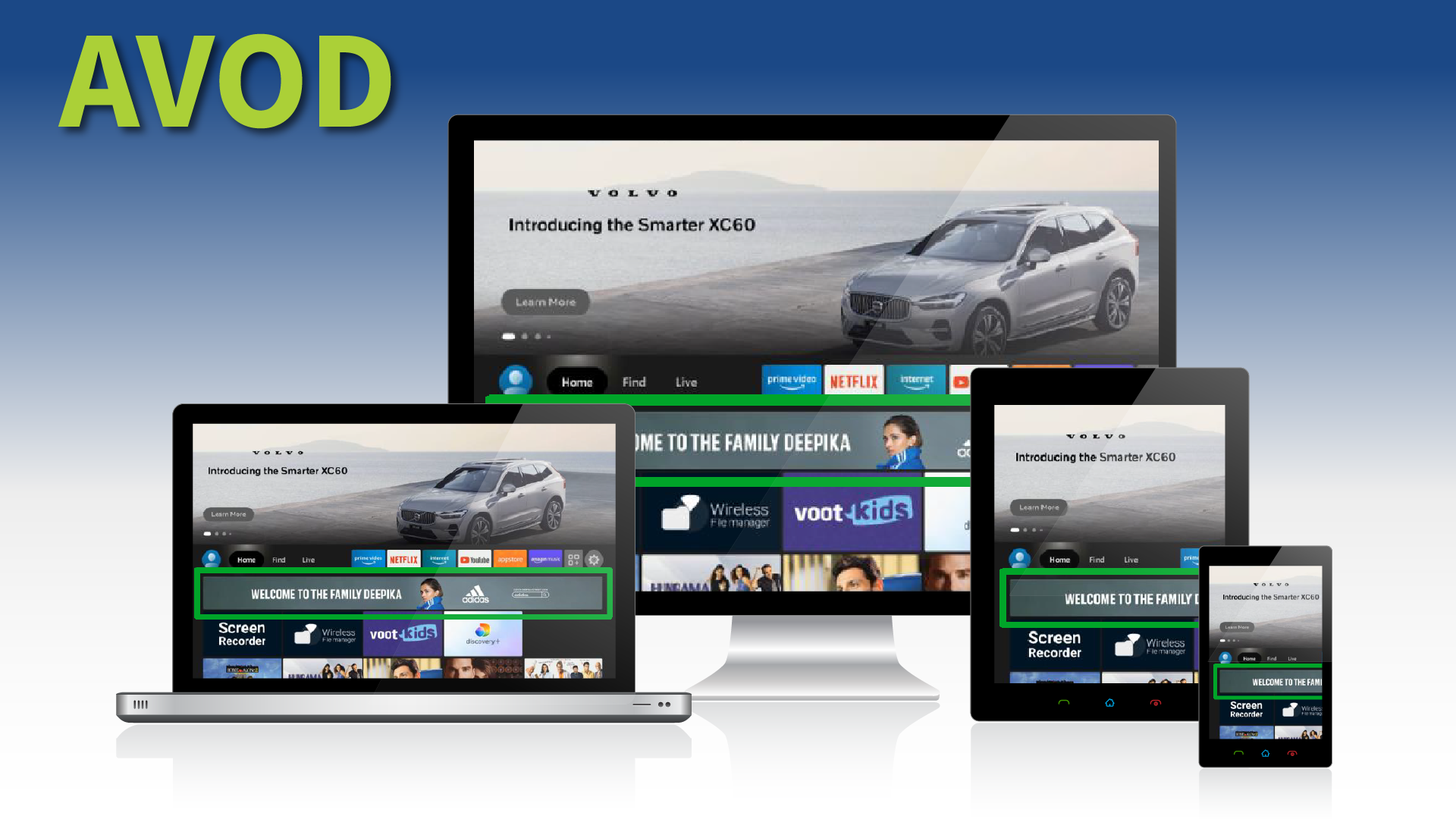As digital advertising and content consumption evolve, new models have emerged to adapt to changing viewer habits and the growing demand for content. Among these models, AVOD (Advertising Video on Demand) is rapidly gaining popularity, particularly in the realm of streaming services. AVOD offers a unique opportunity for content creators, advertisers, and consumers alike, providing a sustainable model that benefits all parties. In this article, we’ll dive deep into what AVOD is, how it works, its key advantages, and how it is transforming the digital media landscape.
What is AVOD?
AVOD stands for Advertising Video on Demand. It refers to a type of streaming service that provides users access to video content free of charge, with the catch being that the content is supported by advertisements. Unlike subscription-based video-on-demand (SVOD) models like Netflix or Hulu, which rely on monthly or annual payments, AVOD platforms generate revenue by inserting ads into the viewing experience.
The AVOD model has become popular because it provides an alternative for viewers who are not willing or able to pay for subscription-based services. Additionally, advertisers are drawn to AVOD for its broad audience reach, allowing them to target large numbers of users who are actively engaged with the content they are watching.
How Does AVOD Work?
The fundamental difference between AVOD and other streaming models, such as SVOD or TVOD (Transactional Video on Demand), lies in the way content is monetized. In an AVOD setup, users can access video content for free, but they must watch advertisements during the playback. These ads can appear as pre-roll (before the video), mid-roll (during the video), or post-roll (after the video).
Key Features of AVOD:
- Free Access to Content: Unlike subscription-based services, AVOD offers users free access to video content.
- Ad-Supported: Revenue is generated through the inclusion of advertisements during content playback.
- Targeted Advertising: Ads can be targeted based on user preferences, demographics, and behavior, making them highly relevant.
- Scalability: AVOD platforms can scale rapidly since they can cater to a wide audience without requiring users to commit to a subscription.
- Global Reach: AVOD platforms are accessible to anyone with an internet connection, making them suitable for global audiences.
The Growing Popularity of AVOD
The AVOD model has gained significant traction over the past few years, particularly as consumer demand for video content continues to rise. With platforms like YouTube, Roku, and Peacock offering AVOD content, the model has proven to be effective in monetizing free content while offering advertisers a lucrative avenue to reach audiences.
One key driver behind the growth of AVOD is the increasing shift toward ad-supported content. According to industry reports, digital advertising spending is expected to increase year over year, and much of that growth is anticipated in video advertising. As consumers increasingly avoid traditional TV and cable services in favor of on-demand video, AVOD has become an essential part of the content ecosystem.
Benefits of AVOD for Advertisers
For advertisers, AVOD provides a wealth of opportunities to engage with consumers. Here’s why the model is becoming so attractive:

1. Massive Audience Reach
With AVOD platforms often offering free content, these services are available to a broad audience. This expansive reach is one of the primary reasons advertisers flock to AVOD services, as it gives them access to large user bases that are highly engaged.
2. Precise Targeting
One of the major advantages of AVOD is its ability to leverage advanced targeting capabilities. Advertisers can tailor their campaigns based on a variety of factors, including geographic location, user preferences, browsing history, and more. This targeted approach leads to more relevant ads being shown to users, increasing the likelihood of conversion.
3. Cost-Effective
Unlike traditional TV ads, which often require large budgets and long-term commitments, AVOD advertising is relatively low-cost and offers flexible spending options. This allows even smaller advertisers to enter the market and benefit from exposure.
4. Better Engagement
AVOD tends to have higher engagement rates than traditional TV or display advertising. Since users are actively choosing content on AVOD platforms, they are often more focused and receptive to the ads, increasing the likelihood that they will interact with them.
Benefits of AVOD for Content Creators
For content creators, AVOD offers a viable revenue model that doesn’t rely on subscription fees or pay-per-view models. Here’s how content creators can benefit:
1. Monetizing Free Content
With AVOD, creators can offer their content for free, making it more accessible to a wider audience. By including ads, they can still generate significant revenue without having to charge users for access.
2. Wider Distribution
Since AVOD platforms are generally free, creators can get their content out to a much larger audience compared to subscription-based services. This can increase brand visibility and help build a loyal following.
3. Sustainable Revenue Streams
In addition to generating ad revenue, creators can also utilize data from AVOD platforms to refine their content strategies. Insights into viewer behavior and engagement can help them improve their offerings and increase their earnings over time.
Popular AVOD Platforms
Several platforms have successfully adopted the AVOD model, and they are now competing for a share of the growing digital advertising market. Some of the most popular AVOD platforms include:
- YouTube: Perhaps the most well-known AVOD platform, YouTube offers millions of hours of free video content, monetized through ads.
- Roku: A leading streaming platform that includes both subscription and AVOD content.
- Peacock: NBC’s streaming service offers both subscription-based content and an ad-supported free tier.
- Tubi: A free streaming service with ad-supported content from a wide range of genres.
- Crackle: Another free, ad-supported streaming service offering a library of movies and TV shows.
AVOD vs. SVOD: Which is Better?
Both AVOD and SVOD models have their pros and cons, and the decision between the two depends on the goals of the business, content creators, and advertisers.
- AVOD is ideal for reaching large audiences without requiring them to commit to subscriptions. It’s also a more flexible option for advertisers due to its cost-effectiveness and targeting capabilities.
- SVOD, on the other hand, works well for consumers who prefer an ad-free experience and are willing to pay for premium content.
The key distinction is that AVOD provides a free service, while SVOD generates revenue solely through subscriptions.
The Future of AVOD
As the digital advertising market continues to grow, the AVOD model is expected to become even more dominant. The ability to offer free content while targeting ads to specific user groups creates a dynamic ecosystem for advertisers, content creators, and viewers alike. We can expect more streaming platforms to embrace AVOD and offer hybrid models that combine free access with optional paid subscriptions or ad-free experiences.
In the future, AVOD may also see innovations in how ads are delivered. From interactive ads to more personalized, data-driven advertising experiences, the possibilities are endless. It’s clear that AVOD will remain a driving force in the way digital content is consumed and monetized.

Conclusion
AVOD represents a compelling model for content consumption, providing access to a wide range of video content for free, supported by advertisements. It benefits both advertisers and content creators by offering an effective way to monetize content while reaching large, engaged audiences. As digital media consumption continues to evolve, the importance of AVOD in shaping the future of streaming platforms and digital advertising cannot be overstated.
For users, AVOD provides access to content without the burden of subscriptions, while still enabling advertisers to effectively target viewers. Whether you’re a content creator, an advertiser, or a consumer, AVOD is here to stay, and its role in the digital media landscape will only continue to grow.
